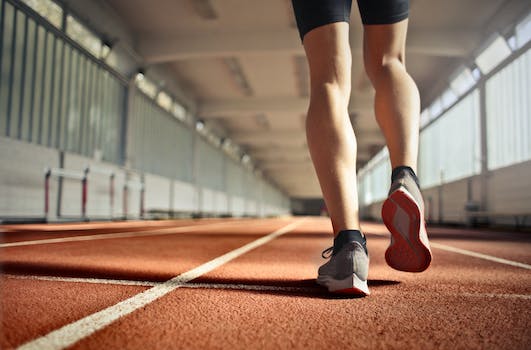-
Table of Contents
- Introduction
- The Benefits of Making Exercise Spaces More Accessible for People with Disabilities
- How to Create an Inclusive Exercise Environment for All Ages and Abilities
- The Impact of Exercise on Mental Health and Well-Being for People with Disabilities
- Strategies for Making Exercise Spaces More Inclusive for People of Different Races and Ethnicities
- The Role of Technology in Making Exercise Spaces More Accessible for Everyone
- Conclusion
“Fitness for All: Empowering Everyone to Reach Their Goals Through Inclusive and Accessible Exercise Spaces.”
Introduction
Fitness for All: Creating Inclusive and Accessible Exercise Spaces is an important initiative that seeks to make exercise and physical activity more accessible and inclusive for all. This initiative works to ensure that everyone, regardless of age, ability, gender, race, or socioeconomic status, has the opportunity to participate in physical activity and exercise. It seeks to create an environment where everyone feels welcome and safe to exercise, and to provide resources and support to help people of all abilities reach their fitness goals. By creating an inclusive and accessible exercise space, we can help to promote physical and mental health for all.
The Benefits of Making Exercise Spaces More Accessible for People with Disabilities

Exercise is an important part of a healthy lifestyle, and it is essential for people with disabilities to have access to exercise spaces that are safe and accessible. Making exercise spaces more accessible for people with disabilities can have a number of benefits, including improved physical and mental health, increased independence, and improved quality of life.
Physical Health Benefits
Exercise is beneficial for everyone, but it is especially important for people with disabilities. Regular physical activity can help to improve physical health, reduce the risk of chronic diseases, and improve overall fitness. Exercise can also help to improve balance, coordination, and strength, which can be especially beneficial for people with disabilities.
Mental Health Benefits
Exercise can also have a positive impact on mental health. Regular physical activity can help to reduce stress, improve mood, and increase self-esteem. Exercise can also help to reduce symptoms of depression and anxiety, which can be especially beneficial for people with disabilities.
Increased Independence
Making exercise spaces more accessible for people with disabilities can also help to increase their independence. Having access to safe and accessible exercise spaces can help to empower people with disabilities and give them the confidence to pursue an active lifestyle.
Improved Quality of Life
Finally, making exercise spaces more accessible for people with disabilities can help to improve their overall quality of life. Having access to safe and accessible exercise spaces can help to reduce feelings of isolation and give people with disabilities the opportunity to socialize and engage in physical activity.
Making exercise spaces more accessible for people with disabilities can have a number of benefits, including improved physical and mental health, increased independence, and improved quality of life. It is important for people with disabilities to have access to safe and accessible exercise spaces, and it is essential for communities to make these spaces available.
How to Create an Inclusive Exercise Environment for All Ages and Abilities
Creating an inclusive exercise environment for all ages and abilities is essential for promoting physical activity and health. An inclusive environment is one that is welcoming and accessible to everyone, regardless of age, ability, or background. Here are some tips for creating an inclusive exercise environment:
1. Make sure the space is accessible. Ensure that the exercise space is accessible for people of all ages and abilities. This includes providing ramps, elevators, and other accommodations for those with physical disabilities.
2. Offer a variety of activities. Offer a range of activities that are suitable for different ages and abilities. This could include low-impact activities such as yoga or tai chi, as well as more intense activities such as running or weightlifting.
3. Provide appropriate equipment. Make sure that the equipment is suitable for all ages and abilities. This includes providing adjustable weights, adjustable benches, and other equipment that can be used by people of different sizes and abilities.
4. Offer instruction and support. Provide instruction and support to ensure that everyone can participate safely and effectively. This could include offering classes or one-on-one instruction.
5. Promote a positive atmosphere. Create an atmosphere that is welcoming and supportive. Encourage people to be respectful of each other and to celebrate each other’s successes.
Creating an inclusive exercise environment is essential for promoting physical activity and health. By following these tips, you can ensure that everyone can participate and feel welcome in your exercise space.
The Impact of Exercise on Mental Health and Well-Being for People with Disabilities
Exercise is an important part of maintaining physical and mental health for everyone, but it can be especially beneficial for people with disabilities. Exercise can help improve physical health, reduce stress, and improve mental health and well-being.
Physical Health Benefits
Exercise can help people with disabilities maintain their physical health. It can help improve strength, flexibility, balance, and coordination. Exercise can also help reduce the risk of developing chronic conditions such as heart disease, diabetes, and obesity. Regular exercise can also help improve sleep quality and reduce fatigue.
Mental Health Benefits
Exercise can also have a positive impact on mental health and well-being. It can help reduce stress, anxiety, and depression. Exercise can also help improve self-esteem and confidence. It can also help improve cognitive functioning, such as memory and concentration.
Social Benefits
Exercise can also help people with disabilities stay connected to their community. It can provide an opportunity to meet new people and build relationships. Exercise can also help people with disabilities stay active and engaged in their community.
Tips for Getting Started
If you are a person with a disability, it is important to talk to your doctor before starting an exercise program. Your doctor can help you find an exercise program that is safe and appropriate for your needs. It is also important to start slowly and gradually increase the intensity of your exercise.
It is also important to find an exercise program that you enjoy. This will help you stay motivated and make it easier to stick with your exercise program. You can also find a buddy or join a group to help keep you motivated.
Conclusion
Exercise can be an important part of maintaining physical and mental health for people with disabilities. It can help improve physical health, reduce stress, and improve mental health and well-being. It can also help people with disabilities stay connected to their community. If you are a person with a disability, it is important to talk to your doctor before starting an exercise program and find an exercise program that you enjoy.
Strategies for Making Exercise Spaces More Inclusive for People of Different Races and Ethnicities
Exercise is an important part of a healthy lifestyle, and it’s important to make sure that everyone has access to the resources they need to stay active. Unfortunately, many exercise spaces are not as inclusive as they could be, and people of different races and ethnicities may feel unwelcome or uncomfortable. Here are some strategies for making exercise spaces more inclusive for people of all backgrounds.
1. Create a Welcoming Environment: Exercise spaces should be welcoming and inviting for everyone. This means creating a space that is free from discrimination and judgement. Make sure that everyone is treated with respect and that everyone feels comfortable and safe.
2. Offer a Variety of Activities: Exercise spaces should offer a variety of activities to accommodate different interests and abilities. This could include offering classes in different styles of exercise, such as yoga, Pilates, and Zumba, as well as offering equipment for strength training and cardio.
3. Provide Cultural Representation: Exercise spaces should strive to represent the diversity of their community. This could include displaying artwork from different cultures, playing music from different genres, and offering classes that are tailored to different cultures.
4. Educate Staff: Exercise spaces should ensure that their staff is educated on issues of diversity and inclusion. This could include providing training on cultural sensitivity and awareness, as well as providing resources on how to create an inclusive environment.
5. Promote Inclusivity: Exercise spaces should promote inclusivity by actively encouraging people of all backgrounds to participate. This could include offering discounts or special promotions to people of different races and ethnicities, as well as creating marketing materials that feature people of different backgrounds.
By implementing these strategies, exercise spaces can become more inclusive and welcoming for people of all backgrounds. This will help to create a safe and comfortable environment for everyone, and will ensure that everyone has access to the resources they need to stay active and healthy.
The Role of Technology in Making Exercise Spaces More Accessible for Everyone
Exercise is an important part of a healthy lifestyle, but for many people, it can be difficult to access the necessary resources to stay active. Fortunately, technology is making it easier for everyone to access exercise spaces and enjoy the benefits of physical activity.
One way technology is making exercise spaces more accessible is through virtual fitness classes. With virtual classes, people can access a variety of exercise classes from the comfort of their own home. This eliminates the need to travel to a gym or studio, which can be difficult for those with limited mobility or transportation. Virtual classes also provide more flexibility in terms of scheduling, allowing people to work out at any time of day.
Technology is also making it easier for people to access exercise equipment. Many companies now offer online rental services, allowing people to rent exercise equipment for a fraction of the cost of buying it. This makes it easier for people to access the equipment they need to stay active without breaking the bank.
Technology is also making it easier for people to track their progress and stay motivated. There are now a variety of fitness tracking apps and devices that allow people to monitor their progress and set goals. This makes it easier for people to stay on track and stay motivated to reach their fitness goals.
Finally, technology is making it easier for people to connect with others who share their fitness goals. There are now a variety of online communities and forums where people can connect with others who are interested in staying active. This makes it easier for people to find support and encouragement as they work towards their fitness goals.
Overall, technology is making it easier for everyone to access exercise spaces and enjoy the benefits of physical activity. From virtual classes to fitness tracking apps, technology is making it easier for people to stay active and reach their fitness goals.
Conclusion
Fitness for All is an important concept that should be embraced by all exercise spaces. By creating inclusive and accessible exercise spaces, we can ensure that everyone has the opportunity to participate in physical activity and enjoy the many benefits it provides. This will help to create a healthier and more equitable society, where everyone can enjoy the benefits of physical activity regardless of their ability or background.















